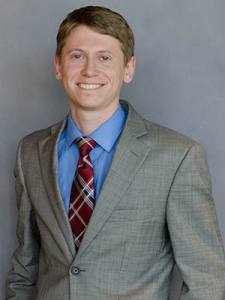Fairview’s mayor calls it the town “jewel”—a large plot of land on the northwest corner of town that officials have bookmarked for years as a future office park.
Town officials have long set aside that area for mixed-use commercial development, from office space to retail and dining. But right now, much of that land lies undeveloped, missing key pieces of infrastructure.
“There’s no sewer; there’s no water; there’s no fiber optics—things that most commercial developers would look to,” Mayor Darion Culbertson said. “We’re about 20 years behind other municipalities in terms of that commercial infrastructure.”
That is why council members in Fairview, a town that is known for rural-feeling residential lots and aims to attract a bustling business scene, have green-lighted a 10-year capital improvement plan to pave the way for economic development.
More than one-third of the capital expenditures outlined in the $100 million plan are directed toward building infrastructure—primarily new roads—in the commercial district on the west side of town that includes the proposed office-park site and is bounded on two sides by US 75 and Greenville Drive.
And the “lynchpin” of these investments, Culbertson said, is the planned extension of Fairview Parkway, which currently dead-ends at Ridgeview Drive, northward to Frisco Road.
The road projects, tentatively slated for construction four or five years from now, add up to 85 percent of the cost of the planned capital investments in the commercial district. The other 15 percent accounts for the cost of trails and water and sewer lines.

Managing development
In planning documents from more than a decade ago, the town had outlined the western commercial district as “an urban type center in Fairview” that could help increase the town’s name recognition throughout the region.
Today, the primary fruit of that initial plan has been the opening of The Village at Fairview, a mix of dining and retail that has become, effectively, Fairview’s downtown, Culbertson said.
“When The Village at Fairview was built, we kind of took a deep breath and rested on our laurels,” Culbertson said. “But we can’t rest on our laurels.”
Fairview officials often speak of balancing the town’s two disparate priorities: maintaining the large lots and rural feel of the town’s residential neighborhoods and promoting business development closer to US 75. Planning strategic capital investments on the western side of town is one way of managing those interests, Fairview Economic Development Manager Ray Dunlap said.
“When you’ve got a plan in place and you stick to your plan, you’re managing the growth, and that way you can keep the flavor of your community,” Dunlap said.
Improvements throughout town
Most of the plan’s projects have yet to be approved or receive funding, although some early planning and design stages are already underway. The ultimate cost of the plan is probably a moving target, town Chief Financial Officer Jason Weeks said.
Weeks and other town staff who formulated the plan have been working to estimate the costs of the investments, trying to factor in rising construction costs over the next decade and other factors as they prioritize the town’s needs.
Although $36.3 million of the projects outlined in the 10-year plan involve building infrastructure in the commercial district, almost twice that amount will go toward public facilities construction and other infrastructure projects throughout the town.
In particular, Weeks said, there is need to eventually replace Fire Station No. 1 with a new building, construct new public works and administration facilities, and possibly erect a new police headquarters. The town’s police department currently operates out of Town Hall.
Bond package likely on horizon
These facilities investments will likely require an extensive bond proposal that could appear before voters as early as November 2017—a measure that Weeks and Culbertson acknowledge would almost certainly require an increase in the property tax rate.
Fairview has maintained one of the lowest tax rates in the area: 35.9999 cents per $100 valuation. The neighboring city of Allen’s rate is 52 cents per $100.
Town staff estimates nearly half of the costs of the plan will be paid through debt that will ultimately be paid by taxpayers. This debt would primarily fund facilities construction, Weeks said.
The bulk of the funding for road construction and other projects like those planned in the commercial district will come from intergovernmental agreements, town operational revenue, impact fees on developers and revenues from the town’s tax increment financing district.
In the meantime, officials believe the office park concept on the northwest corner of town will only become more attractive to developers as the surrounding area builds out and infrastructure improvements are put in place.




